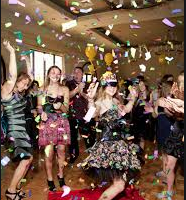Tribal Stories, Fresh and Fertile
In this bold new compilation, Lost Tribe:Jewish Fiction From the Edge (Perennial,$14.95), editor Paul Zakrzewski scopes out fresh and fertile terrain. And of the 25 stories or novel excerpts found here, more than half are written by women. Some are well known, like Myla Goldberg and Tova Mirvis, and several, including Goldberg, Rachel Kadish and Dara Horn, have previously appeared in the pages of LILITH.
What’s most arresting in this anthology is the expansive range: of tone, voice, subject matter. In Ellen Umansky’s “How to Make It to the Promised Land,” we meet Lizzie, a teenage girl who feels woefully out of place at her Zionist summer camp in Malibu, especially when the age-old tradition of color war is subverted into an unsettling game about Jews trying to escape deportation to concentration camps in 1940s Europe. As the story unfolds, the “game” begins to feel all too real: “I am not Lizzie Len them, 15, of Topanga, California but Anya Ossevsheva, 21, of Lodz. I have four kids. I have a long aquiline nose and a hard unsmiling mouth. I look nothing like me.” Gloria DeVidas Kirchenheimer’s “Goodbye Evil Eye” acquaints us with Louise, a young woman who falls in love with her first cousin as the two of them search for the grave of their grandfather, a Sephardic Jew, buried in The Cedars of Lebanon. It’s a place that “straddled the no-man’s-land between Queens and Brooklyn, with the Expressway dividing the waves of headstones.” “Seekers in the Holy Land” by Joan Leegant brings us to present-day Safed, home of ancient Kabbalist mysteries, while Simone Zeitlich’s “Ten Plagues” goes back to the time of Moses and Aaron. Together, these stories offer a kaleidoscopic and sometimes apocalyptic view of what it means to be living, thinking and writing as a Jew today.


